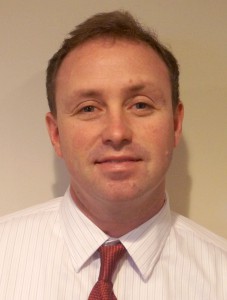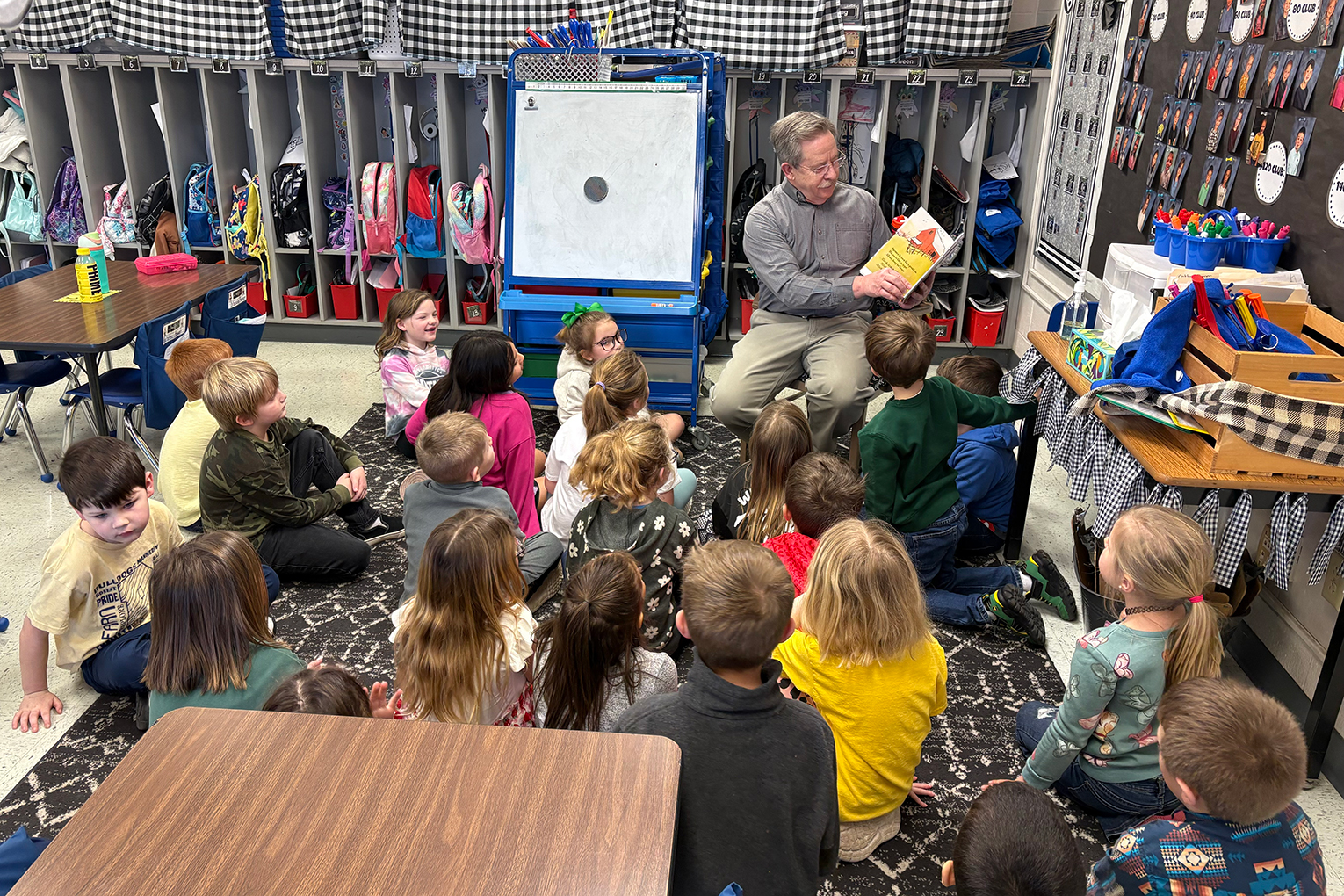
Students at Mason County Middle School analyze fossil evidence to infer what happened to the Cenozoic animals.
Photo submitted by Brian McDowell
By Brian McDowell
Brian.Mcdowell@education.ky.gov
My favorite lesson of all time involves students investigating a dinosaur trackway. I was originally inspired by my science methods teacher in college. She introduced the lesson by showing a graphic of bird tracks. What we did next blew my mind.
We walked outside to an area where she had made a life-size version of the bird trackway with paper prints. I was no longer looking at a 2-dimensional figure; I was inserted into the scene and asked to investigate from a more authentic, scientific point of view.

Brian McDowell
Every year for my first 10 years of teaching, I created a similar experience for my middle school students with only one modification. They wanted to know about dinosaurs rather than birds. The lesson went well, but I knew the experience could be exponentially better if the trackway was 3-dimensional.
As life changed, I decided to come home to Mason County to teach. A huge opportunity arose there. A local limestone mining company wanted to donate $25,000 to the science department for a nature trail.
I wanted to create areas that forced students to think critically, analyze evidence and debate their claims. We compromised on creating a picnic shelter as an outside classroom and an amphitheater. Even though I hoped for much more, those structures consumed our budget.
I decided I had no more excuses not to invest my time in creating the dinosaur trackway. Even though I had no experience with grant writing, I wrote an application for a $10,000 Toyota Tapestry Grant.
Inspired by other paper-based simulations, I got an estimate for building a bone assemblage (group of bones) and a stratigraphy column (wall with layers of rock) as other possible investigative areas. As I took a walk along the existing trail, I figured it all out. Using the gravel trail as a timeline to tie them together, why not write the grant to include all of the areas.
Over the next couple of weeks, I began writing descriptions of each of the areas. I had written several pages (monumental for me), when I had the opportunity to go to our National Science Teachers Conference and attend an informational meeting for the Toyota Tapestry program. I walked away from the meeting with a totally different mindset. I cleared my screen and started over. The judges didn’t want to read about concrete structures, they wanted to know how it would impact students.
I sent my rough draft to anyone who would read it. My school’s English teachers, administrators, community college and university professors — everyone. Reading comments about the work from various lenses improved the grant application, I sent it off with just a couple of days to spare.
Time passed and I began to wonder if I had wasted my time. Then, as an after-school staff meeting closed, my computer dinged with a new email. I read the first line and stopped. The announcement of winners was not supposed to be for a couple of weeks; I had to have read something wrong. I turned the computer to the teacher beside me who had been very supportive through the process. The change in his facial expression was affirmation that we had won.
After much work with our contractors, a stratigraphy column, dinosaur trackway and bone assemblage sat along our nature trail. With each arrival of a concrete truck, the students got more anxious. Finally, the day of the first experience arrived. As we walked down the hill to the site, one of my more challenging students observed, “I feel like a real scientist.”
Engagement during evidence collection, journaling and debate was significantly improved by the authenticity of the experience. Adding the third dimension – like depth in the tracks of the dinosaur trackway — enabled students to distinguish individuals and detect weight changes. Wouldn’t it be great if every lesson was the 3-D, authentic version rather than the worksheet?
I became determined to add more of these areas. I found inspiration in entertainment parks, museums and travel. Funding continued to come from grants, but as the students began to talk about what they were experiencing, community and industry partnerships began to grow. The students at my school now enjoy 15 inquiry, modeling and technology-related areas.
With the help of the same science methods teacher who inspired the trackway, I named these areas “Margins.” Margins are where two different habitats meet. The conditions at margins are different and force innovation in the life forms that exist there. Margins, in an educational sense, prompt investigation, risk-taking and sense of wonder. They represent a place for learning that can include interdisciplinary connections, project-based learning or investigations of chaotic systems with more than one right answer.
As a teacher leader on special assignment for the Kentucky Department of Education, I want to help teachers lead their students to the margins.
Want to come on this journey with me?
Brian McDowell, a National Board certified teacher, is a STEM and Project Lead the Way teacher for Mason County Middle School and a teacher leader on special assignment with the Kentucky Department of Education. He has received the Kentucky Science Teachers Association’s Middle School Teacher of the Year Award, the National Science Teachers Association’s Inquiry Based Teaching Award, was a Presidential Award Finalist and has been awarded more than $70,000 in grants over the past eight years.






[…] Teaching in the margins […]